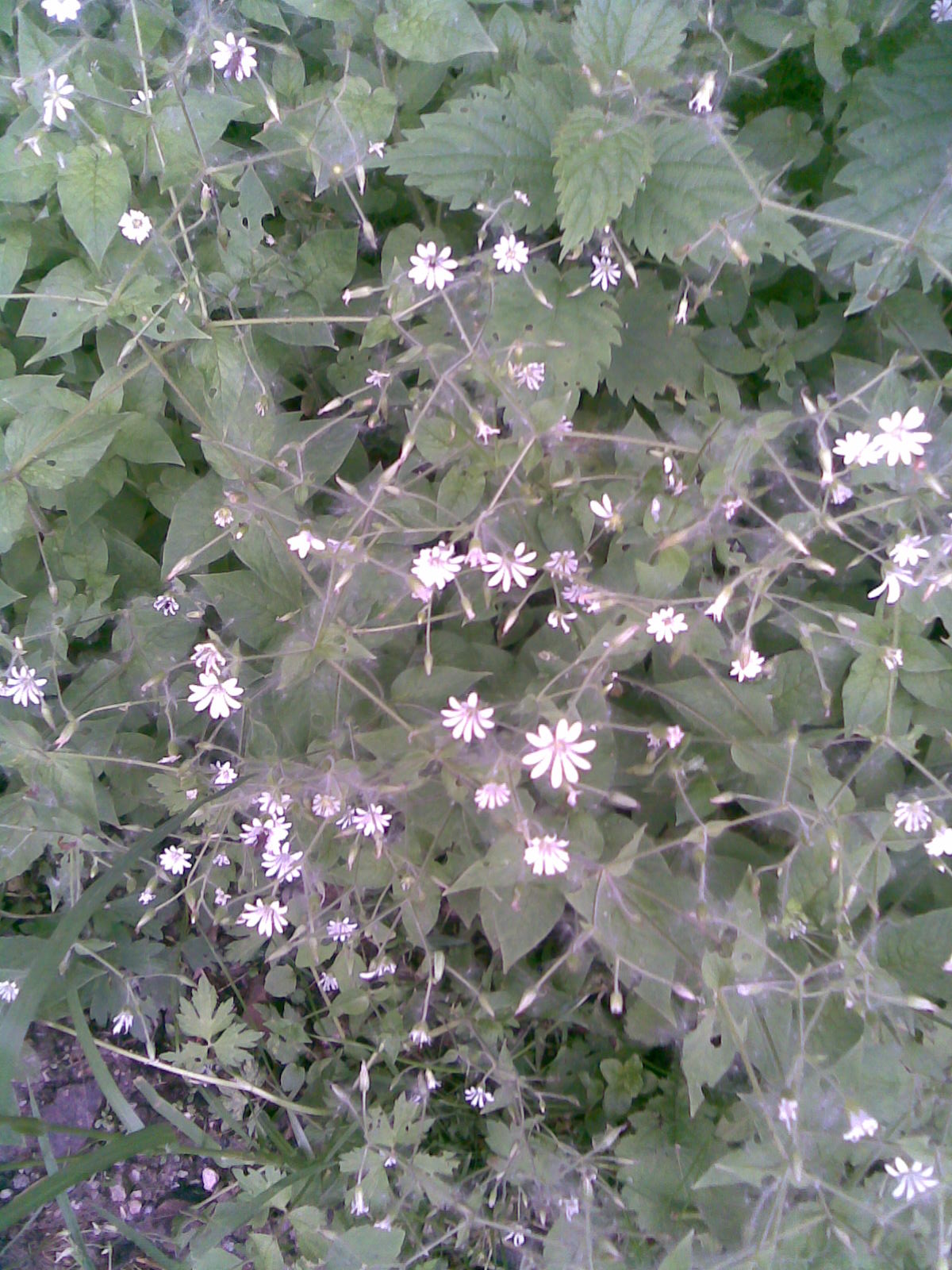Exploring Wood Stitchwort, Starwort
Scientifically recognized as Stellaria nemorum and classified under Caryophyllaceae, stands out as a distinctive Perennial herb known for its unique characteristics. While it may also be found under other Synonyms, Stellaria graminea, Stellaria trifolia.withNone specified form. You can use our free plant care app PlantPlants to identify Wood Stitchwort, Starwort.
Temperature
Min: -10 C (14 F), Max: 30 C (86 F)
Watering
Regular watering to keep soil moist, especially in summer
Fertilizing
Balanced fertilizer (10-10-10)
Sunlight
Prefers partial shade to full shade
Toxicity
Non-toxic



Appearance and Growth Of Wood Stitchwort, Starwort
At maturity, this species reaches approximately Typically 15-30 cm in height, presenting Opposite leaves, lanceolate, green in color along with Small white flowers with five deeply notched petals, blooming from April to June, followed by Small capsules containing seeds. These features are supported by a reliable Fibrous root system, ensuring stability and sustained growth.
Wood Stitchwort, Starwort Origin and Habitat
Native to Widespread across Europe and parts of Asia, Wood Stitchwort, Starwort thrives in Prefers woodland edges, damp meadows, and shaded areas at elevations around Typically found from sea level to about 1,200 meters. Best suited for USDA Hardiness Zone Zones 4-8. Whether grown indoor, in a curated garden or a more natural setting, its ecological requirements help maintain its vigor over time.



How to take Care of Wood Stitchwort, Starwort
Light, Soil and Watering Wood Stitchwort, Starwort.
You can use our free plant identify app PlantPlants to chose the best spot for Wood Stitchwort, Starwort, This plant prefers Prefers partial shade to full shade and flourishes in Moist, well-drained loamy or sandy soils with a soil pH of about 5.5 7.0.
Wood Stitchwort, Starwort needs watering,Regular watering to keep soil moist, especially in summer, guided by PlantPlants app, You can get plants daily watering schedule. to maintain Moist to wet soils, ensure steady hydration. Applying water through Evenly moist without soggy conditions supports even distribution and helps prevent overwatering or dryness.
Temperature and Humidity
Wood Stitchwort, Starwort performs best within 10-25 C (50-77 F). Its ideal growth occurs at around 15-20 C (59-68 F), though it tolerates ranges from Min: -10 C (14 F), Max: 30 C (86 F). Additionally, maintaining Moderate humidity preferred encourages healthy foliage and overall plant vigor.
Fertilization & Soil Health
Feeding with Balanced fertilizer (10-10-10) at the recommended Seasonal Application Frequency on PlantPlants App keeps nutrients balanced. Incorporating Compost or well-rotted manure enhances soil structure and fertility, while staying alert to Yellowing leaves, stunted growth helps you adjust care as needed to maintain optimal plant health.
Routine and Maintenance
Regular attention ensures this plant’s beauty and longevity. End of flowering, typically June for Cut back to basal foliage tidies its appearance, while Not commonly repotted; often grown in the ground may be necessary as it grows, requiring a N/A for garden settings increase and a fresh Well-draining garden soil with organic matter. for Staking or Support. None required.
Seasonal Changes and Propagation of Wood Stitchwort, Starwort
During Not prominent; remains green throughout the year in milder climates, growth may slow and some Leaves may die back in winter in colder climates can occur. For those looking to propagate, consider By seed or division of established clumps and provide Kept moist and in a cool, shaded area when starting from seed. If using cuttings, follow Cuttings can be taken in early spring; place in moist soil to ensure successful rooting and healthy new plants.
Pests, Diseases and Prevention
our free plant identify and care app PlantPlants can help you diagnosisWood Stitchwort, Starwort problems.Though generally robust, keep watch for Aphids, slugs and remain vigilant against Powdery mildew in humid conditions. Implementing Good air circulation, keeping foliage dry and applying Insecticidal soap for pests, fungicides for mildew when issues arise will help sustain the plant thriving.
Companions and Uses of Wood Stitchwort, Starwort
This plant pairs nicely with Wood anemone, bluebells, spring beauty and shows Generally non-aggressive; can coexist with many species, making it a flexible choice for various Groundcover in shaded areas, naturalistic gardens.
Edible and Cultural Aspects
the Edible Parts: Leaves and flowers. Toxicty of Wood Stitchwort, Starwort, Non-toxic. learning about its Harvest young leaves and flowers in spring; best when fresh, Can be used in salads or as a garnish, and Rich in vitamin C can be intriguing for culinary explorers. Some traditions highlight its Traditionally used for its anti-inflammatory properties or note its Associated with traditional folk remedies.
Conservation and Status
With an Not assessed; generally considered stable, proper Preservation of natural habitats
Frequently Asked Questions
1. Is Wood Stitchwort invasive?
No, it typically grows in a controlled manner in its natural habitat.
2. Can Wood Stitchwort grow in full sun?
It prefers partial to full shade; full sun may not be ideal.
3. How do I propagate Wood Stitchwort?
Propagation can be done via seeds or division.
4. When does Wood Stitchwort bloom?
It blooms from April to June.
5. Is Wood Stitchwort edible?
Yes, the leaves and flowers are edible and safe for consumption.
6. What type of soil does Wood Stitchwort prefer?
It prefers moist, well-draining loamy or sandy soils.
7. Can Wood Stitchwort tolerate dry conditions?
No, it prefers moist to wet soil conditions.
8. What are common pests of Wood Stitchwort?
It can be affected by aphids and slugs.
9. How should I care for Wood Stitchwort in winter?
It doesn t require much care; just ensure it isn t waterlogged.
10. Does Wood Stitchwort need fertilizer?
Fertilizing every 4-6 weeks during the growing season is beneficial.


